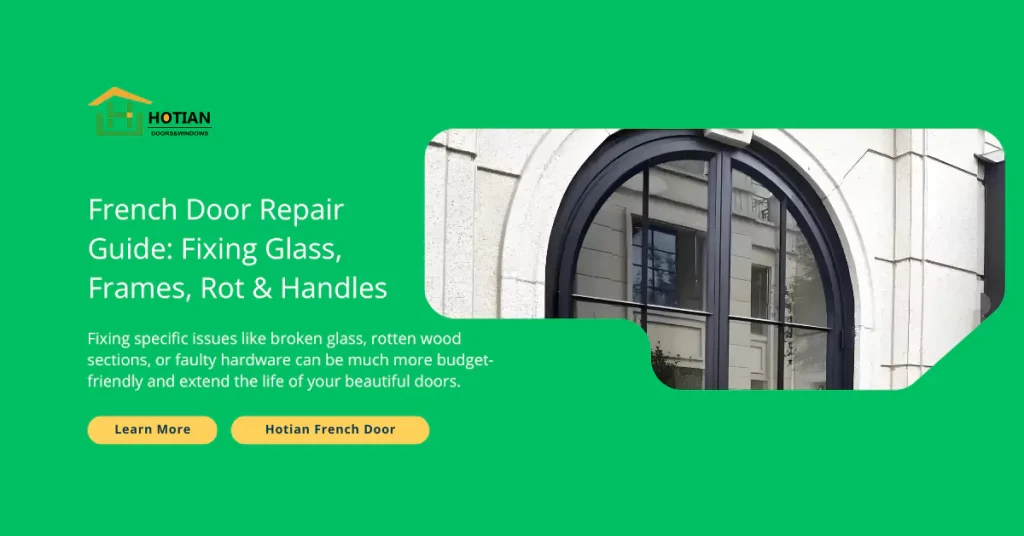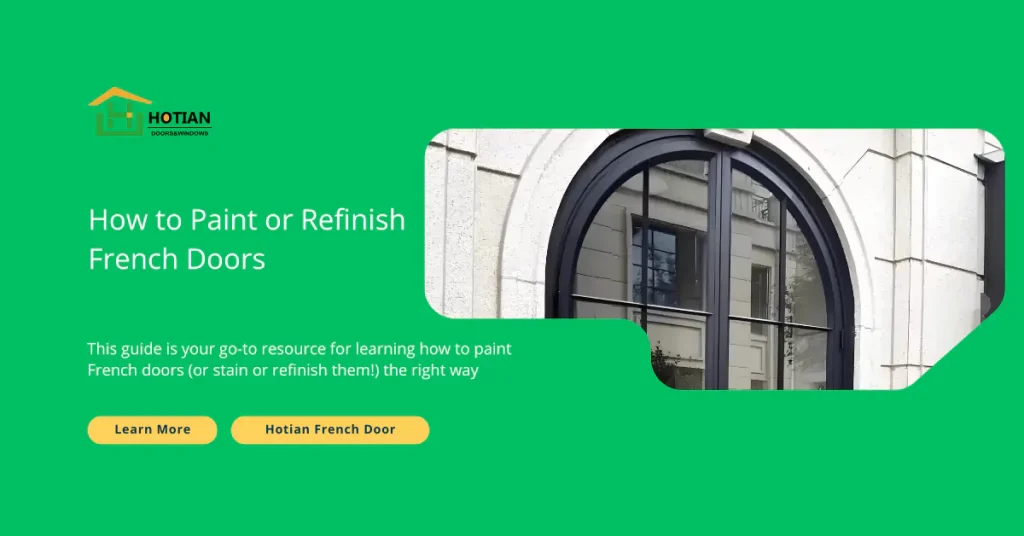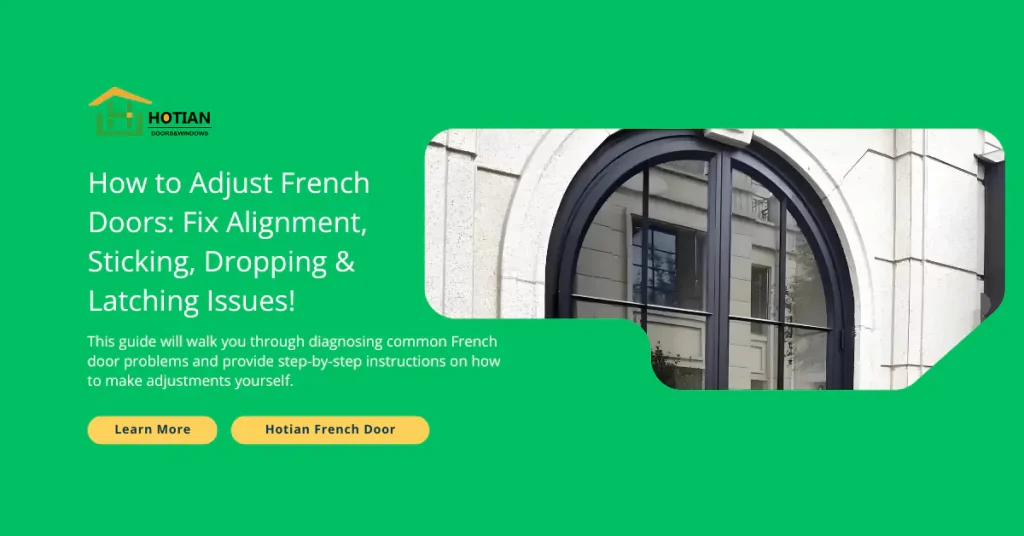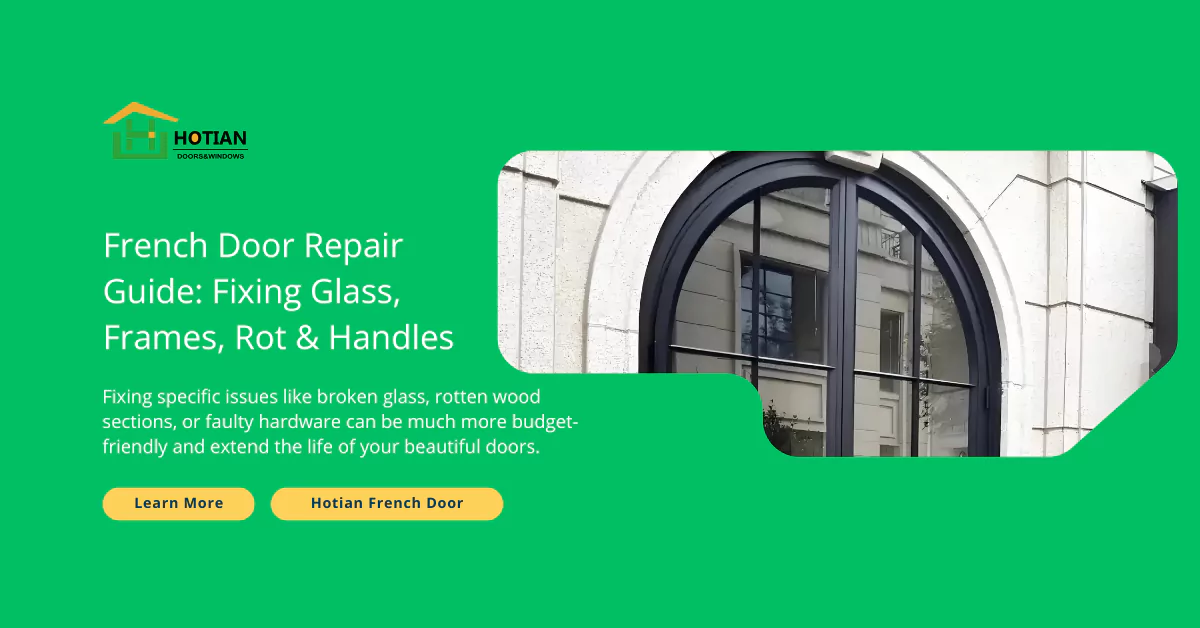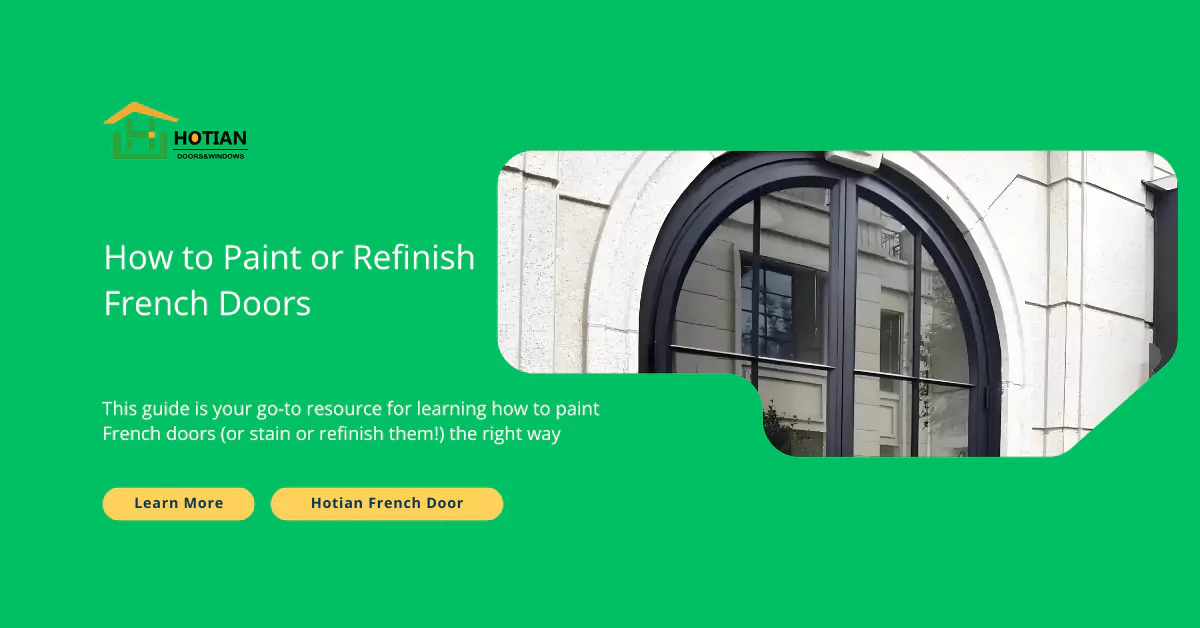French doors are just fantastic, aren’t they? They let in glorious sunshine, offer lovely views, and add a touch of class to any room. Learn more about their charm in What is French Doors? History.
But sometimes, all that glass needs a little something extra. Maybe you want more privacy from neighbors? Or perhaps you need to control that bright afternoon sun? Maybe you want to add a bit more insulation against heat or cold? Or simply add a finishing decorative touch?
That’s where window treatments come in! And the big question is: Can you put blinds, shutters, or shades on French doors?
Yes, absolutely! But… it’s not quite the same as dressing a regular window. French doors have unique features to consider:
- Lots of Glass: Often multiple panes or one large one per door.
- Door Handles/Levers: These stick out and can get in the way!
- Movement: The doors swing open and closed, so treatments need to stay put.
- Shallow Depth: There’s usually not much space between the glass and the door surface for mounting bulky treatments.
Choosing the wrong window treatment can lead to frustration – blinds banging against the glass, handles getting blocked, or treatments falling off. No fun!
This guide is your ultimate resource for finding the best blinds, shutters, shades, and other window treatments specifically for French doors. We’ll cover:
- The challenges unique to French doors.
- All the different types of treatments that work well.
- How to choose the perfect option for your needs (privacy, light, style, budget).
- Tips for measuring and installing them correctly.
- Solutions for specific situations and common problems.
Ready to find the perfect outfit for your French doors? Let’s explore the options!
Understanding French Door Window Treatment Challenges: Why Is It Tricky?
Before we dive into solutions, let’s quickly understand the hurdles:
- Handles & Levers: This is the #1 challenge! Bulky blinds or shades can hit the handle, preventing the treatment from lowering fully or operating smoothly.
- Door Operation: Treatments need to be securely mounted so they don’t swing wildly or fall off when the door opens or closes. Hold-down brackets at the bottom are often essential.
- Shallow Mounting Depth: Many French doors don’t have deep recessed areas around the glass like regular windows. This limits how bulky the headrail (the top part) of blinds or shades can be.
- Multiple Glass Panes: Do you cover each small pane individually (tricky!) or treat the entire glass area as one unit (most common)?
- Installation Surface: Drilling into wood, fiberglass, or steel doors requires different techniques and careful consideration to avoid damage or voiding warranties.
- Aesthetics: You want something that looks good on the door and complements the door’s style, not just covers the glass.
Keeping these challenges in mind helps us choose treatments designed to overcome them!
Types of Window Treatments for French Doors: So Many Choices!
Good news! You have lots of great options. Let’s break them down:
A. Blinds for French Doors: Slatted Style
French Door Blind Price Ranges Comparison
Tap or hover over bars for price range and notes.
Blinds offer adjustable light control by tilting slats.
- Mini Blinds (1-inch Slats):
- Description: Thin aluminum or vinyl horizontal slats. Lightweight and slim.
- Pros: Very affordable, lightweight, slim profile fits shallow depths well, good light control.
- Cons: Can look a bit basic/dated, aluminum slats can bend easily, cords can be messy.
- Installation: Often mounted directly to the door surface above the glass. Hold-down brackets at the bottom are essential to prevent banging.
- Price: $20–$62 (Most budget-friendly)
- Vertical Blinds:
- Description: Long vertical slats that hang from a track above the door frame (not usually mounted on the door itself).
- Pros: Great for very wide openings, easily stack out of the way for full door access, good light control.
- Cons: Need space above the door frame for mounting, can look less "homey" (more office-like) to some, might sway in drafts. Not ideal if you only want to cover the glass portion.
- Price: $60 and up
- Faux Wood / Wood Blinds (Often 2-inch Slats):
- Description: Horizontal slats made of PVC/composite (faux wood) or real wood. Offer a richer, more substantial look than mini blinds.
- Pros: Look more upscale, durable (especially faux wood), good light control and privacy. Faux wood resists moisture well.
- Cons: Much heavier and bulkier headrails. May interfere with handles more easily. Requires careful measurement and potentially spacer blocks during installation to clear handles. Real wood can warp in high humidity.
- Installation: Need sturdy mounting directly on the door. Hold-downs essential. Spacer blocks often needed behind the headrail.
- Price: $20–$112 (Wood is typically pricier than faux wood)
- Roller Blinds (Roller Shades):
- Description: A simple sheet of fabric that rolls up onto a tube at the top.
- Pros: Clean, minimalist look. Available in many fabrics, colors, and opacities (light filtering to blackout). Slim profile often works well. Can provide UV protection.
- Cons: Either up or down (no slat tilting for nuanced light control). Fabric might ripple slightly over time. Need hold-downs to prevent swaying.
- Installation: Mount headrail above the glass. Side channels or hold-downs needed for stability.
- Price: $104–$267 (Depends heavily on fabric choice)
B. Shutters for French Doors: Architectural Elegance
French Door Shutter & Shade Price Ranges
Tap or hover over bars for price range and notes. Note the wide range for Plantation Shutters.
Prices generally per door/shade unless noted. Installation extra. Ranges vary.
Shutters offer a built-in, architectural look.
- Plantation Shutters:
- Description: Wide louvers (slats) mounted inside a frame that is attached to the door. The louvers tilt to control light and privacy.
- Pros: High-end, classic look. Excellent light control and privacy. Durable. Can increase home value (Do French Doors Add Value? discusses value).
- Cons: Most expensive option. Bulky – require special cut-outs in the shutter frame to accommodate door handles/levers. Professional measurement and installation usually recommended. Reduces light slightly even when louvers are open due to the frame.
- Installation: Custom frames are built to fit around the glass and handles, then attached to the door.
- Price: $800–$2,500
- Traditional Shutters: Similar concept but usually with narrower louvers and a simpler frame. Less common on French doors than plantation style.
C. Shades for French Doors: Fabric Softness
Shades offer a softer look than blinds, using fabric panels.
- Cellular / Honeycomb Shades:
- Description: Fabric cells that trap air, looking like a honeycomb from the side.
- Pros: Excellent insulators! Help keep rooms warmer in winter and cooler in summer. Very slim profile fits shallow depths easily. Lightweight. Available in light-filtering or blackout. Top-down/bottom-up option is fantastic for privacy while letting light in from above.
- Cons: Fabric cells can collect dust/insects. Not as easily adjustable for light direction as blinds.
- Installation: Slim headrail mounts easily above glass. Hold-downs recommended.
- Price: $200–$440
- Roman Shades:
- Description: Fabric shades that fold up into neat horizontal pleats when raised.
- Pros: Elegant, high-end look. Huge variety of fabrics and patterns available. Can provide good insulation depending on fabric/lining.
- Cons: Fabric stack when raised can be bulky at the top. Need hold-downs. Might interfere with handles if stack is large. Professional measurement often best for perfect fit.
- Installation: Mount headrail above glass. Requires careful installation to ensure folds hang evenly.
- Price: $100–$700+
- Bamboo / Natural Woven Shades:
- Description: Made from natural materials like bamboo, reeds, grasses. Offer an organic, textured look.
- Pros: Beautiful natural aesthetic. Filter light gently (often require a liner for full privacy/blackout). Eco-friendly options available.
- Cons: Can be see-through without a liner. Natural materials may vary slightly in color/texture. Can be bulkier when raised than cellular shades.
- Installation: Mount headrail above glass. Hold-downs needed.
- Price: $90–$340+
D. Other Window Treatments: Curtains, Film & More
Other & Specialized French Door Treatment Prices
Hover over bars for price range and notes. Note the wide price scale.
Prices per set/door/blind/unit as noted. Installation may be extra.
- Curtains and Drapery Panels:
- How: Usually mounted on a rod above the door frame, not on the door itself. Panels hang to the sides or can be drawn across.
- Pros: Softens the look, adds color/pattern, can provide good insulation and blackout if lined. Huge variety.
- Cons: Can get caught when opening/closing door if not pulled back fully. Might block some light even when open. Doesn't offer the 'on-door' neatness of blinds/shades.
- Mounting: Need sturdy rod brackets installed above the door trim.
- Price: $40–$100 (Depends entirely on fabric and hardware)
- Window Film:
- How: Thin film applied directly to the glass surface.
- Pros: Excellent for privacy (frosted, mirrored, patterned films). Can block UV rays. Easy DIY application. Doesn't interfere with door operation at all. Very affordable.
- Cons: Doesn't offer adjustable light control (it's always frosted/tinted). Can be tricky to apply without bubbles. Some films can void door warranties (check first!). Not easily removable/changeable.
- Price: $10–$60
- Frosted Glass Options:
- How: Permanently etching the glass or using spray-on frosting products.
- Pros: Permanent privacy solution. Clean look, no extra layers.
- Cons: Irreversible (usually). No light control adjustment. Spray-on can look uneven if not done well.
- Price: $ (DIY spray, $5–$20 per can) – $$$ (Professional etching or replacement glass, $200–$800+ per door)
E. Specialized Options: Clever Solutions
- Perfect Fit / No-Drill Blinds: These blinds (often cellular or pleated) come in their own frame that cleverly clips between the glass and the rubber gasket/beading on uPVC or some metal doors. No drilling required! Fantastic for renters or those wary of drilling. Limited availability by door type. Price: $150–$350
- Between-Glass Blinds (Integral Blinds): Blinds (usually mini blinds) are permanently sealed between the panes of double-glazed glass. Operated by external sliders or magnets. Pros: Dust-free, no cleaning needed, won't bang, protected from damage. Cons: Cannot be added later (must be part of the door unit), if they break repair is difficult/impossible, expensive option. Often found on higher-end doors - explore French Door options.
- Add-On Blinds: Enclosed blind units designed to attach over your existing door glass, often with external controls. Simpler than integral blinds but offer similar benefits of being enclosed. Can look a bit bulky. Price: $150–$400
How to Choose the Right Window Treatment: Finding Your Perfect Match
Okay, lots of options! How do you decide? Ask yourself these questions:
A. Factors to Consider:
- Functionality - What's Most Important?
- Privacy: Need full blockage? (Blackout roller/cellular shades, shutters, lined curtains, privacy film). Just need to obscure view? (Light-filtering shades, frosted film, tilted blinds/shutters).
- Light Control: Want full flexibility? (Blinds, shutters allow tilting). Just need to soften harsh light? (Light-filtering shades, sheer curtains). Need darkness? (Blackout options).
- Energy Efficiency: Biggest concern? Cellular/Honeycomb shades are typically the winners here due to their insulating air pockets. Lined curtains and shutters also help.
- Handle Clearance: How much does your handle stick out? This might rule out bulky wood blinds or shutters without cut-outs. Slim options like mini blinds, cellular shades, or roller shades are safer bets.
- Aesthetics - What Looks Good?
- Match your room's style? (Modern = roller shades, sleek blinds. Traditional = wood blinds, Roman shades, shutters, curtains. Farmhouse = bamboo shades, shutters).
- Color and Material? Coordinate with walls, furniture, and the door itself.
- Inside vs. Outside Mount? (Most French door treatments are 'inside mount' relative to the glass pane, meaning mounted directly on the door). Curtains are 'outside mount' above the frame.
- Budget - What Can You Afford?
- Low ($45–$110): Window film, DIY frosted glass, basic mini blinds.
- Mid ($150 - $1000+): Roller shades, cellular shades, faux wood blinds, natural shades, curtains, add-on blinds.
- High ($2,000–$5,000): Plantation shutters, high-end Roman shades, wood blinds, integral blinds.
- Factor in professional installation costs if not DIYing (especially for shutters).
- Door Type & Configuration:
- Inswing vs. Outswing: Doesn't usually affect treatment choice on the door, but affects curtains mounted above. See How French Doors Open.
- Material: Can you drill easily? (Wood = yes. Fiberglass/Steel = yes, but use proper bits, pre-drill carefully. Check warranty!). No-drill options best for uPVC or if wary of drilling.
- Handle Style: Lever handles often need more clearance than round knobs.
- Glass Panels: Single large pane is easiest. Multiple small panes (grids/lites)? Usually best to treat the whole glass area as one with a single blind/shade/shutter panel per door.
Installation Guide: Getting it Right!
Okay, you've chosen your treatment. Now, the crucial steps: measuring and installing.
A. Measuring for French Door Window Treatments: Precision is Key!
General Tips:
- Measure Each Door's Glass SEPARATELY! Even if they look identical, slight variations exist.
- Use a metal tape measure for accuracy.
- Measure width at top, middle, bottom. Measure height at left, middle, right. Use the smallest width and height for inside mounts.
- Account for Handles! Measure how far the handle/lever protrudes from the door surface. You'll need a treatment slim enough or use spacer blocks to clear it.
- Measure the VISIBLE GLASS area if mounting directly over the glass. If mounting above the glass onto the door stile (the solid vertical part), measure that area.
- Follow the specific measuring instructions provided by the manufacturer of the blinds/shades/shutters you choose!
Common Mistakes: Measuring the whole door instead of just the glass area; forgetting handle clearance; not using a metal tape measure.
B. Mounting Options: Attaching to the Door
- Direct Mount (Most Common for Blinds/Shades): Headrail is screwed directly onto the door surface, usually just above the visible glass area.
- Tools: Drill, appropriate drill bits (wood, metal), level, pencil, screws (often included).
- Process: Hold bracket in place, mark screw holes, pre-drill pilot holes (essential for fiberglass/steel to prevent cracking/stripping), screw bracket securely. Attach headrail.
- Hold-Down Brackets: Small brackets installed near the bottom corners of the glass. The blind/shade bottom rail clips into these to prevent banging when the door moves. Highly recommended for almost all blinds/shades on doors! Install after the main treatment is up.
- Spacer Blocks / Extension Brackets: Used behind the headrail brackets. These small blocks push the headrail further away from the door surface, creating extra clearance for bulky handles. Essential if your chosen blind/shade headrail is deeper than the space available above the handle.
- Tension Rods (Curtains Only): For lightweight curtains inside the glass frame (if recessed) or small sidelight windows next to doors. Not usually strong enough for full French door curtains.
C. DIY vs. Professional Installation:
- DIY Possible For: Mini blinds, cellular shades, roller shades, window film (with patience!). Requires careful measuring and basic drilling skills.
- Consider Pro For: Plantation shutters (require precision fitting), complex Roman shades, potentially wood/faux wood blinds if spacer blocks are tricky, or if you're simply not comfortable drilling into your doors.
- Cost: Pro install adds $50-$200+ per window/door depending on treatment type and location.
- Finding Pros: Look for local window treatment specialists with good reviews.
Special Considerations: Thinking Deeper
- Rental-Friendly: Need options that don't damage the door? Consider Perfect Fit/no-drill blinds (if compatible), window film (check if removable type allowed), or lightweight curtains hung on magnetic rods (if door is steel) or Command Strip hooks (very light curtains only) above the frame (not on door).
- Eco-Friendly: Look for shades made from sustainable materials (bamboo, recycled fabrics), cellular shades for energy savings, or brands with green certifications.
- Maintenance: How much cleaning are you willing to do? Shutters/wood blinds need dusting. Cellular shades can trap dust. Fabric shades might need occasional vacuuming. Film just needs wiping.
- Seasonal Needs: Consider treatments offering insulation (cellular shades, lined curtains/shades, shutters) for better temperature control year-round.
Best Options for Specific Situations: Quick Picks
- Maximum Privacy: Blackout Roller/Cellular Shades, Plantation Shutters, Lined Curtains, Privacy Window Film.
- Best Light Control Flexibility: Blinds (Mini, Wood, Faux Wood), Plantation Shutters (tiltable louvers).
- Top Energy Savers: Cellular/Honeycomb Shades.
- Handle Clearance Issues: Slim options like Cellular Shades, Roller Shades, Mini Blinds, or custom Shutters with handle cut-outs. Perfect Fit blinds excel here too.
- Easiest DIY: Window Film, basic Mini Blinds (with care).
- Most Elegant Look: Roman Shades, Plantation Shutters, high-quality Curtains.
Design Inspiration: Picture Perfect!
Seeing real examples can spark ideas for your own space! Look online (Pinterest, Houzz) for "French door window treatments" to see endless possibilities. Coordinate colors and textures with your existing furniture, rugs, and wall colors.
Troubleshooting Common Issues: Quick Fixes
- Blinds Bang When Door Opens/Closes: Install hold-down brackets at the bottom!
- Handle Hits Headrail/Treatment: Needs more clearance. Use spacer blocks behind mounting brackets OR choose a slimmer treatment (cellular, roller, mini blinds).
- Treatment Doesn't Hang Straight: Check if headrail is mounted level. Adjust mounting brackets slightly.
- Can't Drill Into Door (Rental/Warranty): Explore Perfect Fit/no-drill blinds or window film.
Buying Guide: Smart Shopping
- Price Comparison: Shutters > Roman/Wood/Cellular/Add-on > Roller/Faux Wood/Natural > Mini Blinds / Film. (General guide, varies by brand/features).
- Where to Buy: Online retailers (Blinds.com, SelectBlinds, etc.), Big Box Stores (Home Depot, Lowe's - often stock basic sizes), Local Window Treatment Specialists (best for custom/complex options and installation).
- Questions to Ask: What's the warranty? What are the exact mounting depth requirements? Are hold-down brackets included/recommended? Is hardware included?
- Sales: Look for sales around major holidays!
FAQ Section: Your Questions Answered!
- Q: Can you put blinds on French doors?
- A: Yes! Mini blinds, faux wood/wood blinds, and roller blinds (shades) are common choices. Ensure proper mounting and hold-downs.
- Q: Can plantation shutters work on French doors?
- A: Yes, beautifully! They need custom frames with handle cut-outs. Usually requires professional measure/install.
- Q: What are the BEST blinds for French doors?
- A: Depends on needs! Cellular shades (great insulation, slim), Roller shades (clean look, many fabrics), Faux Wood Blinds (durable, good control - check handle clearance), Mini Blinds (budget-friendly, slim).
- Q: How do you measure for blinds on French doors?
- A: Measure the visible glass width and height accurately (top, middle, bottom - use smallest). Check manufacturer specs for required deductions. Crucially, measure handle projection!
- Q: Do French doors NEED window treatments?
- A: Need? No. But treatments add privacy, light control, insulation, and style, which most people want/need.
- Q: How to add privacy to French doors?
- A: Many ways! Blackout shades, shutters, lined curtains, privacy film (frosted/mirrored), or even just tilting blinds closed.
- Q: Can you reuse blinds from sliding doors for French doors?
- A: Unlikely. Sliding door blinds are usually very wide single units. French doors need two separate, narrower treatments fitted to each door's glass.
- Q: What size blinds do I need for French doors?
- A: Measure the glass area of each door accurately. The required blind size will be based on those measurements (often slightly smaller for inside mounts).
- Q: How to frost French door glass for privacy?
- A: Easiest DIY is using frosted window film or spray-on frosting products. Permanent options involve sandblasting or acid-etching (usually pro).
- Q: How to handle door knobs/hardware when installing blinds?
- A: Choose slim-profile treatments OR use spacer blocks/extension brackets behind the headrail mounting brackets to push the treatment forward, clearing the handle. Shutter frames have built-in cut-outs.
Conclusion: Dress Your Doors with Confidence!
Finding the right window treatments for your French doors doesn't have to be complicated! By understanding the unique challenges (handles, movement, depth) and exploring the many suitable options – from slim cellular shades and practical roller blinds to elegant Roman shades and classic plantation shutters – you can find the perfect solution.
Remember to prioritize function (privacy, light control), fit (accurate measurements, handle clearance), and style. Don't forget those crucial hold-down brackets for blinds and shades!
Ready to enhance your French doors? Whether you need the doors themselves or are looking for high-quality doors that might even come with integrated blind options, check out our selection of beautiful and customizable French doors. Find the perfect foundation for your window treatment masterpiece!
Now go ahead and choose the perfect treatment to make your French doors even more fabulous!

